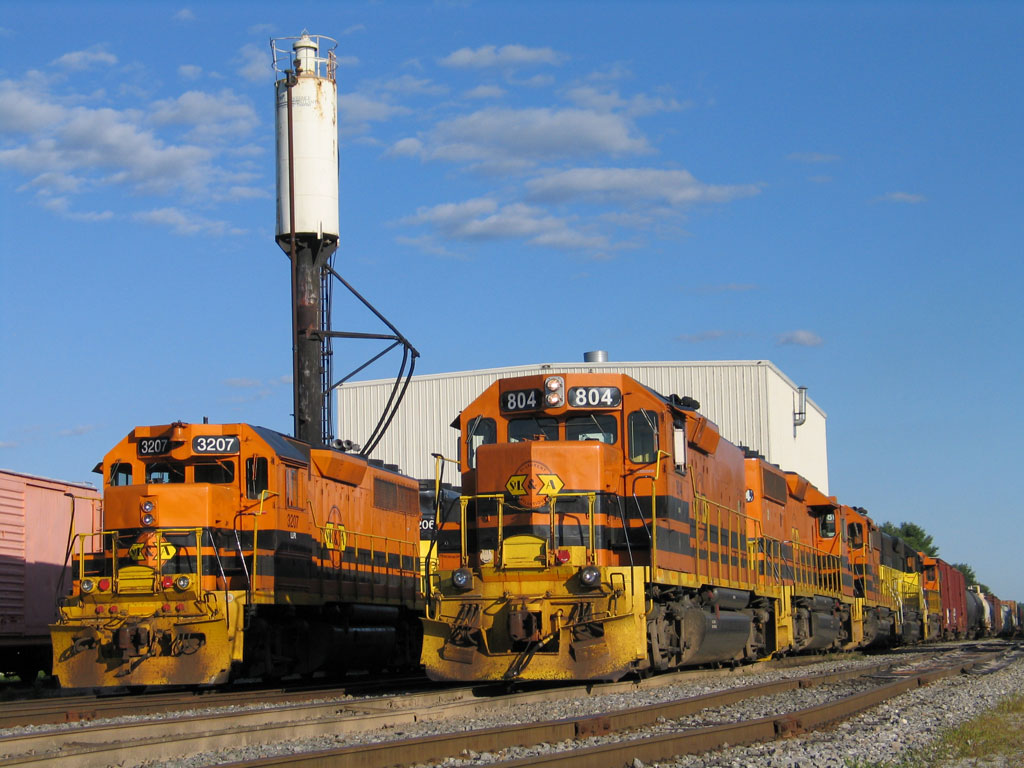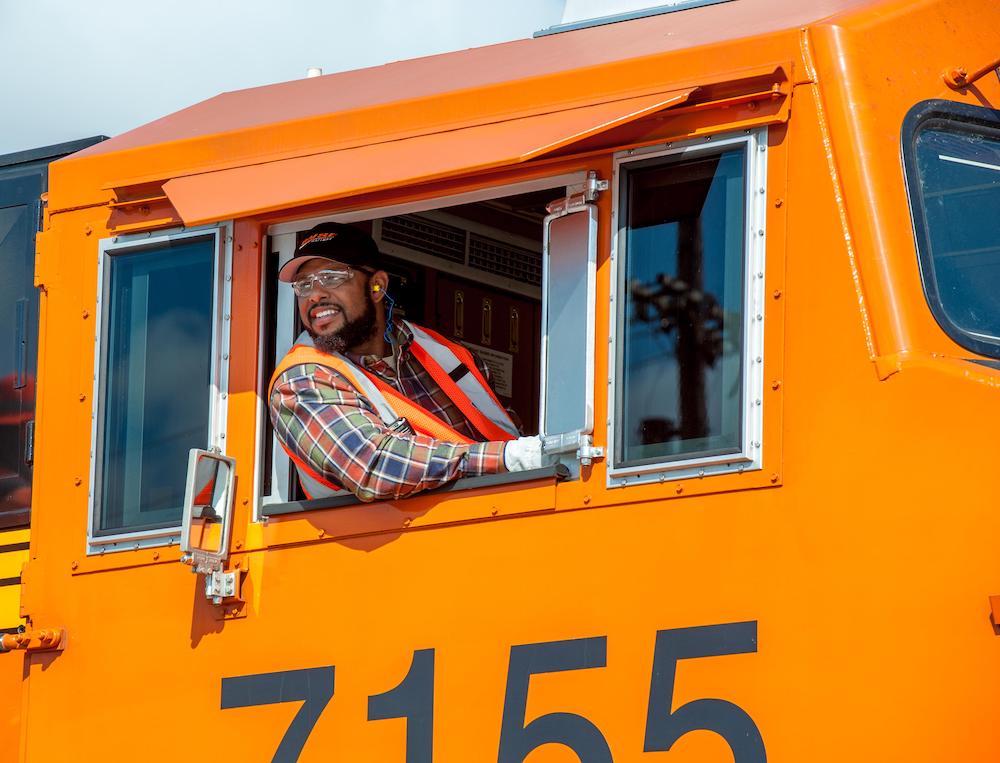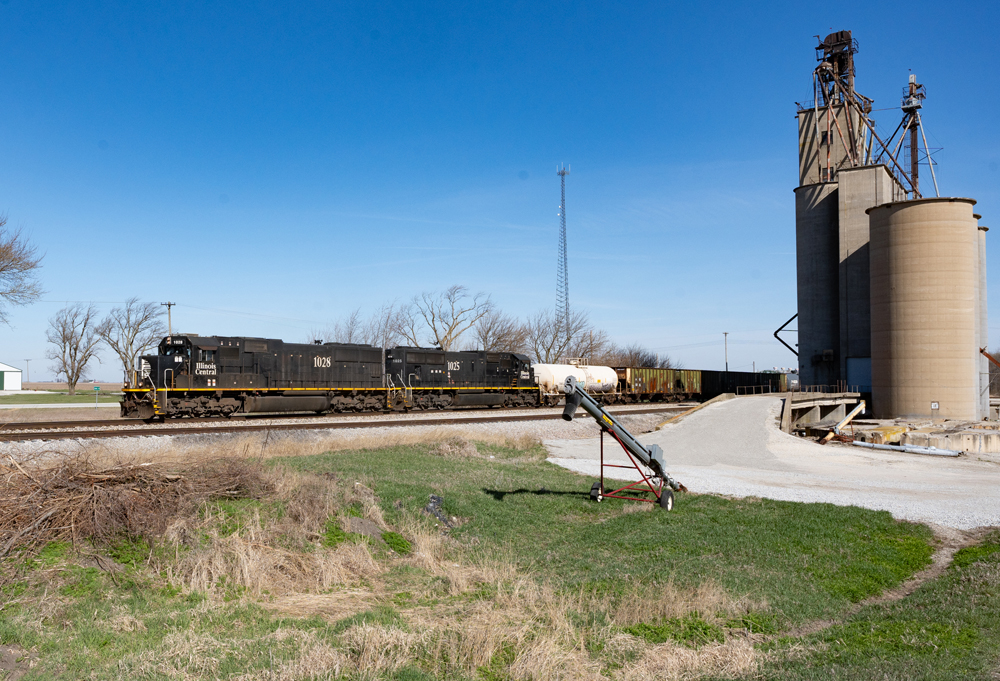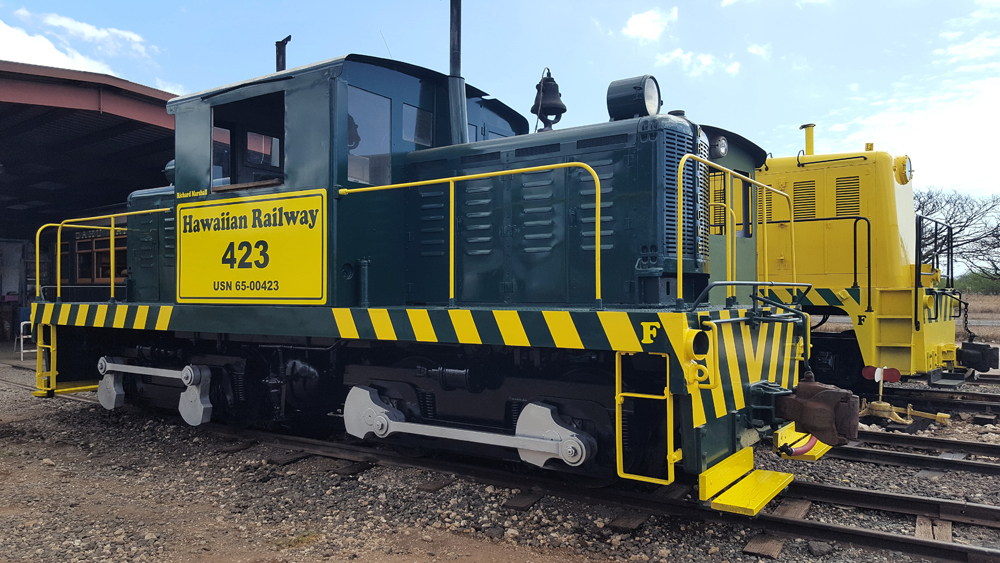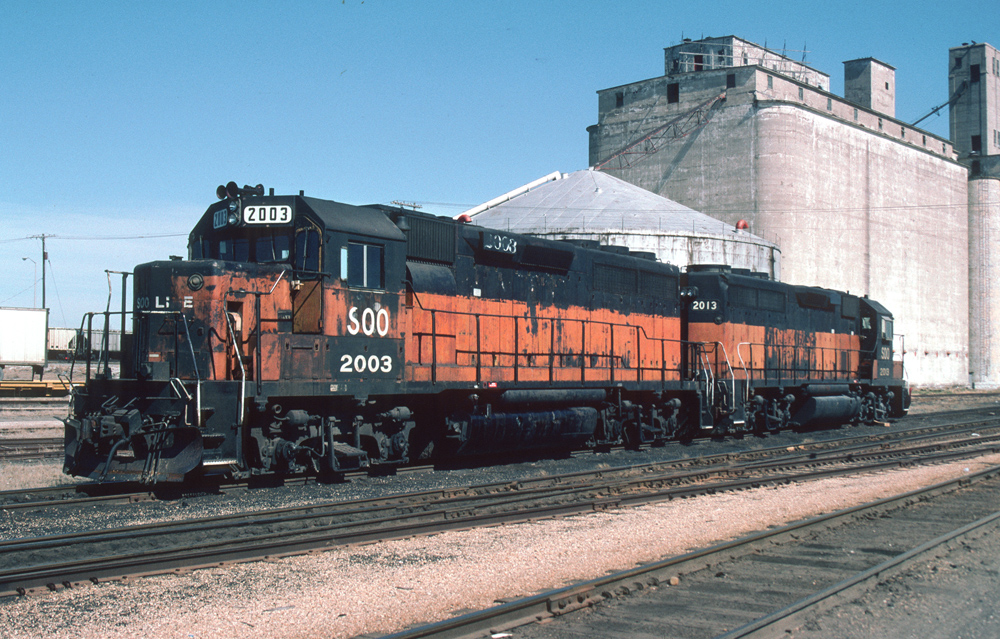As of spring 2010, Genesee & Wyoming has 583 locomotives in service of which all but 30 are owned outright. That’s a much smaller number of leased units than it was in years past, and for good reason, too. Leased power can be problematical because, as one shortline maintenance officer puts it, “Fixing leased power is like fixing taxi cabs – you’re always fixing somebody else’s problem. Better you spend your time and money making your own fleet more reliable.”
G&W, with its aggressive acquisition program, has inherited a good many of “other peoples’ problems” and has been shedding leased power as well as locomotive types, now numbering 50 different classes of locomotives and mostly EMD at that. The North American fleet is interesting because of the way it evolved. The St Lawrence & Atlantic, for example, operates more than 250 route-miles of railroad, two-thirds of which are in the U.S. and the balance in Canada. Being a former Canadian National property, the St. Lawrence & Atlantic inherited power with a distinctive Canadian look and special crew equipment, then added its own locomotives through the attrition of leased power.
When G&W acquired the St. Lawrence & Atlantic, the railroad was part of the Emons Transportation Group and they in turn had brought on their own collection of pre-owned power. As a result, the railroad’s locomotive roster at one time listed 20 units: two SW1s, one each from the Pennsylvania Railroad and the New York Central; four GP9s, one of which was ex-Grand Trunk; four road slugs, one of which began life on the Chesapeake & Ohio, nine GP40s of four variations – straight, Dash 2, Dash 3 and 40M-3 – and one M420W. Four of the GP40s are ex-Rock Island.
Today, the St. Lawrence & Atlantic fleet consists of 20 units, all of which are EMD and are much better suited to the road’s freight demands. There are four sets of mother/slug pairs remanufactured in 2003 – these are the primary road power with four reliable GP40-2s and a GP40 working with the slug sets as needed. A mix of SW1500s, GP15-1s, and a lone GP38-2 handle yard switching and the local freight customers. All the inherited SW1s are stored and the Montreal Locomotive Works six-axle units were sold shortly after completion of the Emons transaction.
In 2005 G&W bought Railroad Management Corp., from Earl Durden and in the process inherited 83 locomotives on 13 railroads ranging from the 171-mile Georgia Central operating in the middle of that state to the 11-mile Atlantic & Western, a Tar Heel operation connecting with CSX on the former Seaboard Air Line main at Sanford, N.C.
As in Maine, the locomotive fleet coming with the purchase consisted mainly of four-axle power of varied provenance. There were, for example two stored GE 70- tonners on the Atlantic & Western. There were numerous SW7s, SW9s, and SW1500s scattered around on several other roads and three rare GP15Ts on the Apalachicola Northern. Georgia Central’s fleet was chiefly four-axle GE units with U23B, U30B, and U33B models off the Seaboard Air Line, C&O, Louisville & Nashville, Seaboard Coast Line, and even the Rock Island. Finally, the Bay Line and Meridian & Bigbee sported a clean group of EMDs mainly of the GP38, GP38-2, and GP40-2 variety. Toss in a few first-generation GP7s and GP9s, among the other Durden roads, and you get the picture.
Some of G&W’s latest acquisitions, the Ohio Central system, among others, added another 63 units to the fleet, half of which were large high-horsepower GEs while the Columbus & Greenville purchase in 2008 brought on another 30 GP-type units. Despite adding these large and diverse fleets G&W has in the past four years thinned out its locomotive fleet to mostly EMD yard switchers and road units of a much-reduced number of discreet models. The common thread remains however: all but a few locomotives are owned outright and are sufficiently well-maintained to meet the strict GVA performance standards.
For more information about Genesee & Wyoming, see June 2010 Trains magazine.





